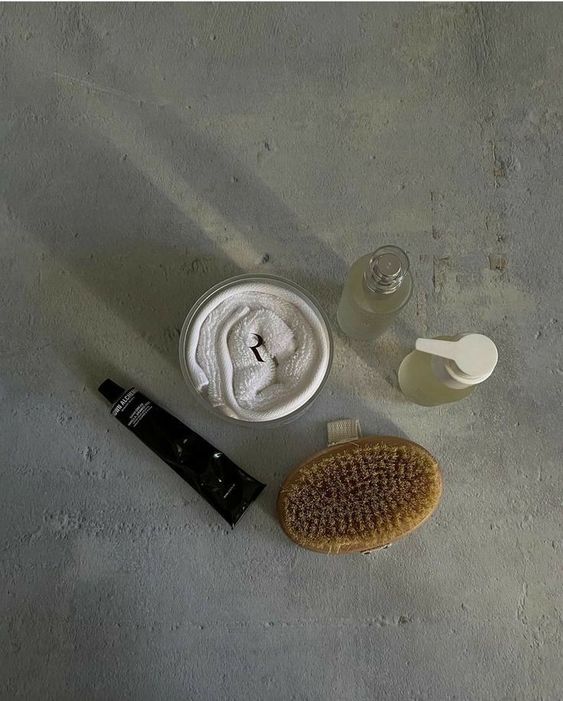
An Ancient Practice For Modern Day
The latest and greatest trend in the world of crystal beauty is gua sha, which is something you probably came across on your Instagram feed. Used for thousands of years by the elite women of ancient Chinese dynasties, gua sha is a 2000-year-old treatment and is considered to be one of the oldest recorded forms of traditional Chinese medicine (TCM)[1].
Historical Outlook: The Beginnings of Gua Sha
Gua sha practices are traced back to the Paleolithic Age where hands or stones were rubbed on various parts of the body in an effort to alleviate pain and/or symptoms when people felt sick or became unconscious.
It was also widely used as a form of treatment during the Ming Dynasty (1368-1644) by the ancient Chinese. Depending on the socioeconomic status of the individual and the type of treatment, various materials were used as scrapers. According to legends, empresses and concubines in China predominantly used jade to scrape their faces, while other people used copper, horns of animals, pointed stones, and various metals as a form of gua sha[2].
Terminology Standpoint: Absolute Definition of Gua Sha
In its literal meaning, gua sha is defined as “scraping away illness”. It involves using a variety of tools, some of which include bian stone, jade and ox horn while rubbing different parts of the patient's body in one direction over and over again. The goal is to “activate blood circulation to dissipate blood stasis” in an effort to relieve various ailments and diseases, as per the TCM practices, which have gradually improved with time.
In Chinese, the term "gua" is defined as stroking, while the term "sha" refers to the reddish petechiae, or red/purple spots that appear on the skin. The stagnation of the blood, which occurs as a result of a weak flow or circulation in the skin, is the result of the gua sha treatment.
The TCM theory of meridians and gua sha therapy apply the same technique by allowing the meridians, which are pathways where the blood and qi (vital energy), to flow in an intricate network that connects the internal organs and limbs to their external counterparts and the lower to the upper internal organs and limbs as well. In doing so, the toxic fluid, or sha, is raised to the surface and can be seen as small red, or purple dots; hence, causing the skin to become hot and eventually extracted.
Gua sha can stimulate blood flow and remove coldness, negative energy, toxic-heat and promote lymphatic fluid from the body through the skin, according to Max Jonuscheit. Through the process, more blood serum is produced and improves the body's
immune system.
The color of the sha tells us so much about the prognosis. If the sha is light-colored, then that indicates blood deficiency. However, if the sha is purple or black, then that shows that the blood is long-standing, while the dark red sha implies heat.
The sha is usually raised at the positive or yang surface of the body, such as the back, neck, shoulders, buttocks, and limbs to treat chronic or acute pain in the muscles. According to the TCM diagnosis, it can also be applied to the chest and abdomen to treat and prevent the flu and/or common cold as well as any chronic disorder that hinders the flow of the qi and blood.
Gua sha can be used to treat, alleviate and heal chronic degenerative diseases such as migraines, shoulder and back pain, menstrual disorders, insomnia, hypertension, vertigo, chronic infections, sciatica, rheumatoid arthritis and much more,”
Liu Chunyan, from the third Affiliated Hospital of Beijing University of Chinese .
Having said that, people who suffer from hemophilia, leukemia, or have inflamed skin and open wounds should refrain from practicing gua sha as well as the elderly or those who have poor menstrual maladies.
Advantages of applying gua sha facial techniques
- Skin renewal
- Gentle complexion exfoliation
- Reduced inflammation and puffiness
- Smooths out fine lines and wrinkles
- Firms, tones and plumps the skin
- Boosts collagen and elastin synthesis
- Improves the appearance of dark under-eye circles
- Enhances the penetration of skincare formulas
- Promotes a more even-out, luminous skin tone
- Delivers oxygen and nutrients where needed
- Helps to flush toxins and excess fluids
Sun and Liu both advise to follow the proper methods associated with gua sha as a form of self care at home since it stimulates the facial muscles and meridians; hence, affecting the blood flow[2]. It causes the capillaries on the face to burst if used incorrectly, thus causing red or purple bruises, known as sha. If the skin breaks during a gua sha treatment, which should not happen unless there is a pre-existing condition, then the chances of having an infection significantly increases. Therefore, in order to avoid such situations, practitioners should maintain a healthy and sterile environment by cleaning their gua shas between treatments[3].
Refrain from practicing should you suffer from
- Infections
- Tumors
- Bleeding and clotting disorders
- Bruises, wounds and other lesions
- If you are taking anticoagulants
- Facial implants (consult your physician first)
- If a lesion is small like a wart or zit, just avoid that area
To conclude, the historical importance of gua sha and its transition to modern day skincare practices is tremendous. At Rosafa, we believe in delivering products that are kind to your skin, soul and mind. Visit our Instagram, Facebook, Pinterest, and LinkedIn social media platforms to learn more!
Reference
[1] https://guashatherapie.nl/history/?lang=en




